Search results for: 'bronze'
-
 Cycladic marble vase
Cycladic marble vaseThe so-called Kandila perfectly illustrates why the abstract Bronze Age art of the Cyclades still fascinates us today. The parallels to modern art are unmistakable. The masterpiece comes from Elie Borowski's inventory.
€34,000 Beaker of the Urnfield culture
Beaker of the Urnfield culturePottery vessel with fantastic decoration dating to the Urnfield period, the transition between Bronze Age and Iron Age in Central Europe. Found in Southern Germany. 1200 to 800 BC.
€600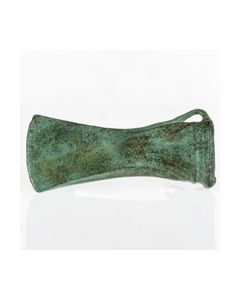 Socketed axe head from Southern Germany
Socketed axe head from Southern GermanyA typical bronze tool of the late Urnfield culture or early Hallstatt culture. It was found near Regensburg in Southern Germany by a voluntary archaeologist.
Price: on request Phrygian fibula from the Hattatt collection
Phrygian fibula from the Hattatt collectionBronze fibula from Anatolia around the time of King Midas. The piece is published in two standard works and was on loan to the Ashmolean Museum.
Price: on request Villanovan fibula from the Hattatt collection
Villanovan fibula from the Hattatt collectionBronze brooch of the Italic Iron Age. The piece is published in the standard work "Brooches of Antiquity".
Price: on request Villanovan fibula from the Hattatt collection
Villanovan fibula from the Hattatt collectionSerpentine bronze brooch of the Italic Iron Age. The piece is published in the standard work "Brooches of Antiquity".
Price: on request Large Villanovan fibula from the Hattatt collection
Large Villanovan fibula from the Hattatt collectionImposing bronze brooch of the Italic Iron Age. The piece is published in the standard work "Brooches of Antiquity".
Price: on request Big Cup of the Urnfield culture
Big Cup of the Urnfield cultureCeramic vessel dating to the transition period between Bronze Age and Iron Age in Central Europe. 1200 to 800 BC. Found in an urnfield in Austria.
Price: on request Cup of the Urnfield culture
Cup of the Urnfield cultureCeramic vessel dating to the transition period between Bronze Age and Iron Age in Central Europe. 1200 to 800 BC. Found in an urnfield in Austria.
Price: on request Italic fibula with nice incised decoration
Italic fibula with nice incised decorationLarge bronze brooch of a typical boat-shape from Iron Age Italy. A special feature and rarity are the three links of a chain still hanging on the pin.
Price: on request Juglet from the Urnfield period
Juglet from the Urnfield periodSmall juglet dating to the transition period between Bronze Age and Iron Age in Central Europe. 1200 to 800 BC. Found in an urnfield in Lower Austria.
Price: on request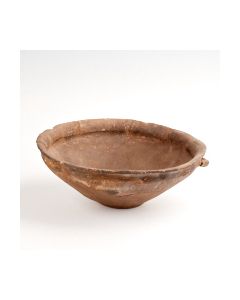 Big bowl from the Urnfield period
Big bowl from the Urnfield periodCeramic vessel dating to the transition period between Bronze Age and Iron Age in Central Europe. 1200 to 800 BC. Found in an urnfield in Lower Austria.
Price: on request Cup of the Urnfield culture
Cup of the Urnfield cultureCeramic vessel dating to the transition period between Bronze Age and Iron Age in Central Europe. 1200 to 800 BC. Found in an urnfield in Austria.
Price: on request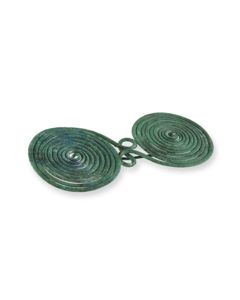 Magnificent spectacle brooch from Greece
Magnificent spectacle brooch from GreeceThe very large bronze brooch was made between the 9th and 6th century BC. It is formed by a single piece of wire. With an old expertise from Nefer Gallery.
€4,700 Bow fibula of the Urnfield culture
Bow fibula of the Urnfield cultureExcessively rare brooch type from Late Bronze Age in Bavaria. It is known from the Urnfield period hoard of Reisen near Munich in Germany. This piece has been found near Regensburg, Germany.
Price: on request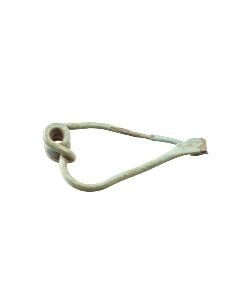 Early bow brooch of the Urnfield period
Early bow brooch of the Urnfield periodSimple fibula shape dating to the Late Bronze Age. Interesting mix of two-sided spiral spring and simple pin holder.
Price: on request Beaker of the Bell Beaker culture
Beaker of the Bell Beaker cultureThe voluminous body has the typical shape of vessels from the Bell Beaker culture. It has been made during the transitioning period between Stone Age and Bronze Age.
Price: on request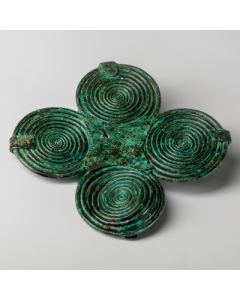 Italic quatrefoil fibula
Italic quatrefoil fibulaExtremely well preserved double spectacle brooch dating to the early Iron Age in Italy. 8th cent. BC. Acquired 1989 at Casa Serodine.
Price: on request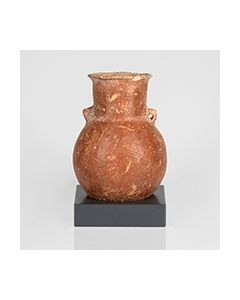 Published cypriot amphora, ex Sotheby's
Published cypriot amphora, ex Sotheby'sFully preserved, early vase from the Bronze Age. 1977 on exhibition in the Bielefeld Museum of Fine Arts. From an old German private collection, acquired 1970 at Sotheby's. Coming with an ArtLoss certificate.
Price: on request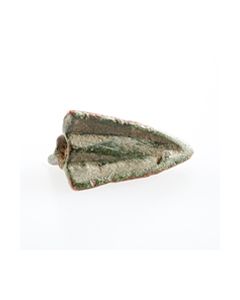 Schön geformte skythische Pfeilspitze
Schön geformte skythische Pfeilspitzeantike Bronzepfeilspitze. Dreiflüglig. Exzellente Erhaltung mit schöner Patina. Typisch für skythische Völker ab ca. 700 v.Chr.
Price: on request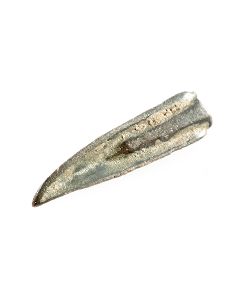 Schön geformte skythische Pfeilspitze
Schön geformte skythische Pfeilspitzeantike Bronzepfeilspitze. Museale Erhaltung mit schöner Patina und Bodenablagerungen
Price: on request Sehr schöne skythische Pfeilspitze
Sehr schöne skythische Pfeilspitzeantike Bronzepfeilspitze. Dreiflüglig, sehr gute Erhaltung mit Patina. Typisch für Skythische Völker ab ca. 700 v.Chr.
Price: on request Schön geformte skythische Pfeilspitze
Schön geformte skythische Pfeilspitzeantike Bronzepfeilspitze. Dreiflüglig. Exzellente Erhaltung mit schöner Patina. Typisch für skythische Völker ab ca. 700 v.Chr.
Price: on request Römisch-Skythische Pfeilspize
Römisch-Skythische PfeilspizeDreiflüglige Pfeilspitze in perfekter Erhaltung. Fundort: Niedergermanien.
Price: on request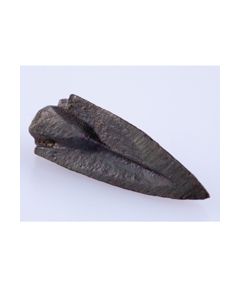 Römisch-Skythische Pfeilspize
Römisch-Skythische PfeilspizeDreiflüglige Pfeilspitze in perfekter Erhaltung. Fundort: Niedergermanien.
Price: on request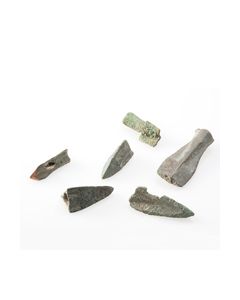 Gruppe skythischer Pfeilspitzen
Gruppe skythischer Pfeilspitzen6 antike Bronzepfeilspitzen. Meist dreiflüglig in guter Erhaltung. Typisch für skythische Völker ab ca. 700 v.Chr. Aus dem danubischen Raum.
Price: on request Römisch-Skythische Pfeilspize
Römisch-Skythische PfeilspizeRömisch-Skythische Pfeilspize
Price: on request Gruppe skythischer Pfeilspitzen
Gruppe skythischer Pfeilspitzen6 antike Bronzepfeilspitzen. Dreiflüglig, zum Teil in musealer Erhaltung. Typisch für skythische Völker ab ca. 700 v.Chr. Aus dem danubischen Raum.
Price: on request Italic Quatrefoil Fibula
Italic Quatrefoil FibulaExtremely well preserved double spectacle brooch dating to the early Iron Age in Italy. 8th cent. BC.
Price: on request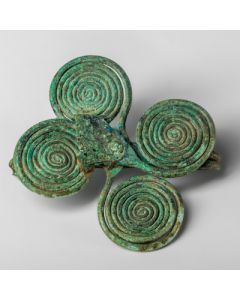 Italic Quatrefoil Fibula
Italic Quatrefoil FibulaExtremely well preserved double spectacle brooch from a grave. Dating to the early Iron Age in Italy, 8th cent. BC. Acquired 1986 at Casa Serodine.
€650 Gruppe von 3 skythisch-griechischen Pfeilspitzen
Gruppe von 3 skythisch-griechischen PfeilspitzenGroße, markant geformte antike Bronzepfeilspitzen. Dreiflüglig. Exzellente Erhaltung mit schöner Patina. Typisch für skythische Völker ab ca. 700 v.Chr.
Price: on request Group of 3 Scythian-Greek arrow heads
Group of 3 Scythian-Greek arrow headsMarkant geformte antike Bronzepfeilspitzen. Dreiflüglig. Exzellente Erhaltung mit schöner Patina. Typisch für skythische Völker ab ca. 700 v.Chr.
Price: on request Gruppe von 3 skythisch-griechischen Pfeilspitzen
Gruppe von 3 skythisch-griechischen PfeilspitzenMarkant geformte antike Bronzepfeilspitzen. Dreiflüglig. Exzellente Erhaltung mit schöner Patina. Typisch für skythische Völker ab ca. 700 v.Chr.
Price: on request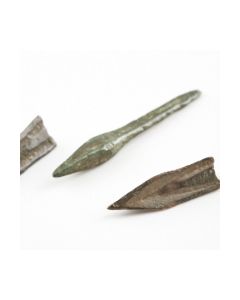 Gruppe von 3 skythisch-griechischen Pfeilspitzen
Gruppe von 3 skythisch-griechischen PfeilspitzenMarkant geformte antike Bronzepfeilspitzen. Eine massiv, mit quadratischem Querschnitt. Exzellente Erhaltung mit schöner Patina.
Price: on request Gruppe von 3 skythisch-griechischen Pfeilspitzen
Gruppe von 3 skythisch-griechischen PfeilspitzenMarkant geformte antike Bronzepfeilspitzen. Dreiflüglig, eine mit Widerhacken. Exzellente Erhaltung mit schöner Patina. Typisch für skythische Völker ab ca. 700 v.Chr.
Price: on request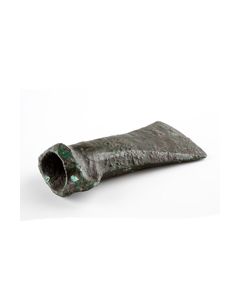 Tüllenbeil - Fundort Orvieto, Italien
Tüllenbeil - Fundort Orvieto, ItalienItalisches Tüllenbeil mit breiter Schneide. Späte Bronzezeit Italiens. Vollständig intakt mit wunderschöner dunkler Patina.
Price: on request

